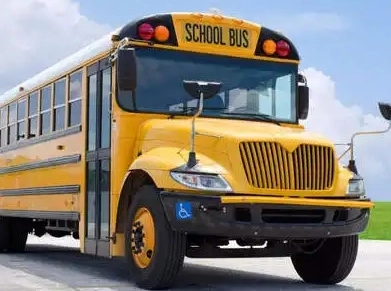
Every morning, as commuters make their way through bustling roads, traffic often slows near the unmistakable sight of a yellow school bus halting to pick up or drop off children. It's an everyday image etched into our routines. But have you ever paused to question why these buses are almost always painted in that same distinct shade of yellow? It’s not a coincidence, nor just a matter of custom. The reason lies in science, visibility, and child safety.
Yellow: Chosen With Purpose, Not by Chance
The choice of yellow for school buses wasn’t made at random. Decades ago, experts deliberately selected the colour after considering how the human eye perceives certain shades. Yellow is one of the most visible colours to the human eye, especially during daylight hours. It reflects a high amount of light, making it particularly effective at catching attention even in poor weather conditions—rain, fog, or overcast skies.
This makes it the ideal colour for vehicles that need to be spotted instantly and consistently, regardless of surroundings. School buses transport our most precious passengers—children—and the need to quickly recognise the vehicle is crucial for ensuring their safety on the roads.
Why Not Red?
Red might seem like an obvious candidate—it’s bright and intense and is already associated with warning signs. However, that’s exactly the issue. Red is already extensively used for things like stop signs, brake lights, and emergency indicators. Using it for school buses may confuse or send the wrong signal to drivers. Yellow, on the other hand, is a strong visual cue that doesn’t conflict with existing traffic symbols. It silently communicates, “Be careful. Children are here.” That unmistakable message makes a critical difference when drivers must act swiftly.
A Colour That Works with Peripheral Vision
What’s even more fascinating is how yellow plays a role in our side vision. According to a report by India Today, our peripheral vision is more sensitive to bright, high-contrast shades like yellow. That means even if a driver isn’t looking directly at a school bus, they’re more likely to notice it from the corner of their eye. In high-speed traffic or when reaction time is limited, this subtle advantage could help prevent accidents.
Design That Thinks Ahead: Black on Yellow
Another thoughtful detail lies in the bus lettering. The black text against the yellow backdrop isn’t just aesthetically pleasing—it’s highly functional. This sharp contrast ensures the writing is legible from a distance, whether the bus is moving or still. It allows approaching drivers to recognise the vehicle and respond appropriately quickly.
A Standard That Has Stood the Test of Time
The tradition of
yellow school buses began in the 1930s in the United States when transport officials sought to create a standard for school bus design to enhance safety. Since then, even as technology has evolved and safety features have become more advanced, the core colour has remained unchanged. Why? Because it still works. The iconic yellow remains a silent guardian of safety, reminding everyone to drive carefully when young lives are aboard.
 Every morning, as commuters make their way through bustling roads, traffic often slows near the unmistakable sight of a yellow school bus halting to pick up or drop off children. It's an everyday image etched into our routines. But have you ever paused to question why these buses are almost always painted in that same distinct shade of yellow? It’s not a coincidence, nor just a matter of custom. The reason lies in science, visibility, and child safety.
Every morning, as commuters make their way through bustling roads, traffic often slows near the unmistakable sight of a yellow school bus halting to pick up or drop off children. It's an everyday image etched into our routines. But have you ever paused to question why these buses are almost always painted in that same distinct shade of yellow? It’s not a coincidence, nor just a matter of custom. The reason lies in science, visibility, and child safety.